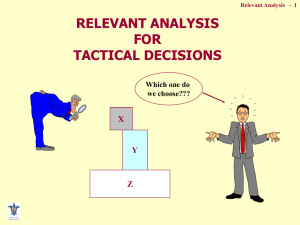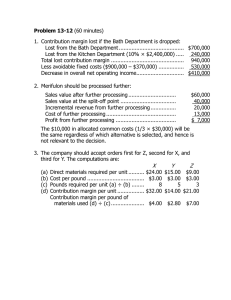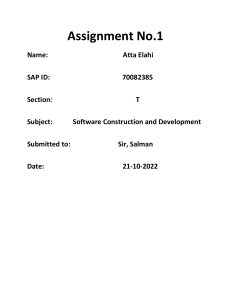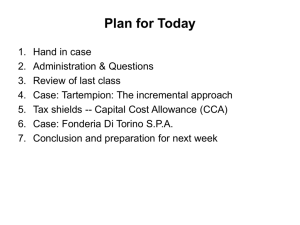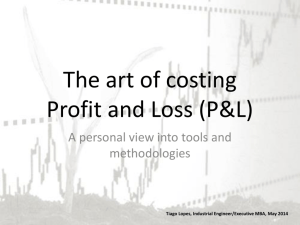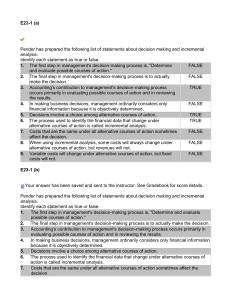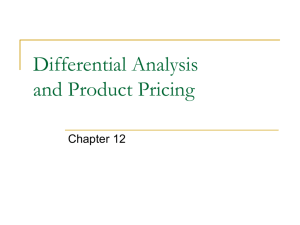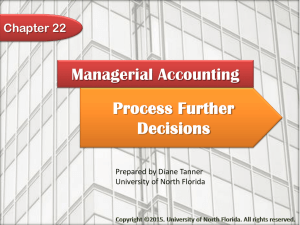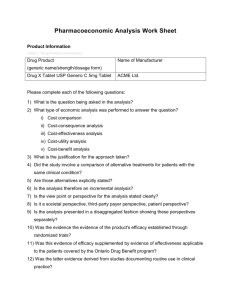REVIEW FOR EXAM NO. 4, ACCT-2302 (SAC) (Chapters 25
advertisement
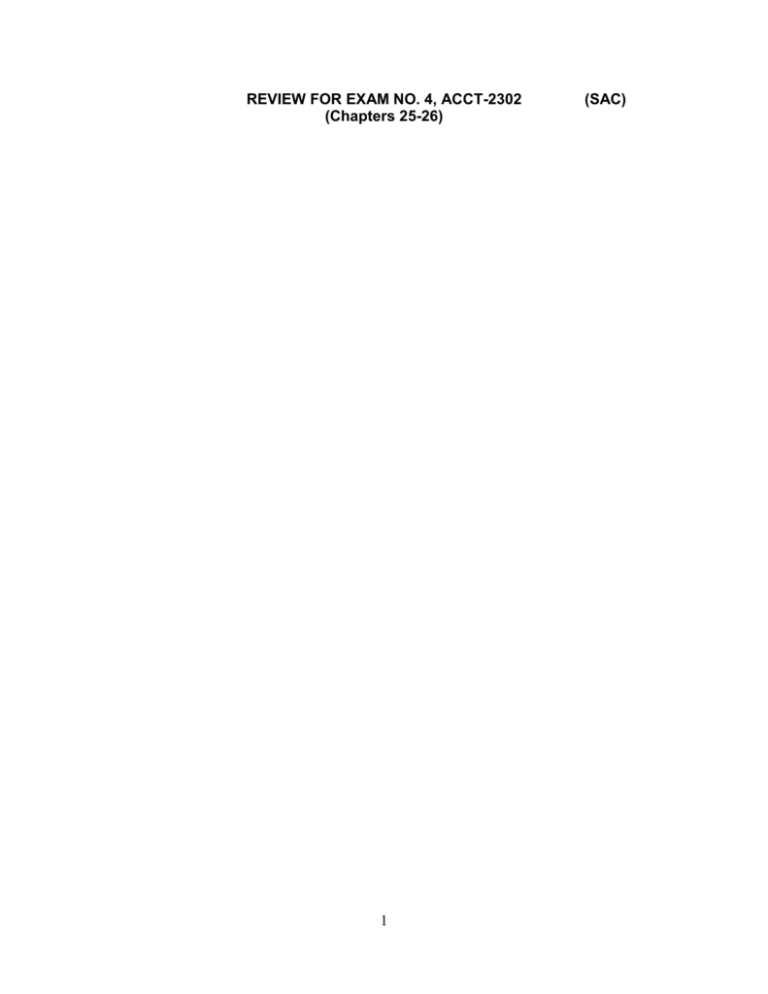
REVIEW FOR EXAM NO. 4, ACCT-2302 (Chapters 25-26) 1 (SAC) A. Chapter 25 (Short-Term Business Decisions). 1. Relevant Costs. a. Costs that are applicable to a particular decision. b. Costs that should have a bearing on which alternative a manager selects. c. Costs that are avoidable. d. Future costs that differ between alternatives. 2. Keys to Analysis. a. Focus on relevant revenues, costs, and profits. b. Use contribution margin approach to separate fixed and variable costs. 3. Accepting Additional Business. a. Decisions made based on incremental costs and incremental revenues. 4. Dropping Products and Segments. a. A candidate for elimination only if revenues are less than avoidable expenses. b. Drop if avoidable fixed costs are greater than its contribution margin. 5. Product Mix. a. Determine if any constraints exist to limit production and sale of all products. b. Produce products that provide the highest contribution margin per unit of the constraint. 6. Make or Buy Decisions. a. In-house product cost includes direct material, direct labor, and variable overhead. (Predetermined fixed overhead rate is not used.) b. Out-source only if the in-house cost is greater than the offered supplier cost. 7. Sell or Process Further. a. As a general rule, process further only if incremental revenues exceed incremental costs. 2 B. Chapter 26 (Capital Investment Decisions). 3 1. Relevant Costs. a. Future costs that differ between the alternatives. b. In analysis, use only relevant costs, not total costs or complete income statement approach. (1) Differential Revenue (2) Incremental Cost 4 c. Opportunity Costs - Economic benefit “forgone” as a result of pursuing a particular course of action (alternative). d. Sunk Costs - A cost that arises from a past decision and cannot be avoided or changed. 2. Capital Investment Analysis/Budgeting. a. Process by which management plans, evaluates, and controls long-term investment decisions. 3. Evaluation Methods/Indicators. a. Methods that do not use Present Value. (1) Cash Payback (2) Accounting Rate of Return b. Methods that use Present Value. (1) Net Present Value (2) Internal Rate of Return 4. Pay Back Period. a. Length of time it takes to recover original investment, in terms of annual net cash flows. b. Net cash flow is excess of revenue cash inflows over cash outflows for expenses. 5. Accounting Rate of Return. a. Measures the average return over the life of an asset. b. Formula: ARR = Average Annual Operating Income Average Amount Invested 6. Net Present Value. a. The (NPV) method computes the expected net monetary gain or loss from a project. b. Discounts the expected cash flows to the present. c. Formula: NPV = (Present value of cash flows) - (Investment cost) 5
